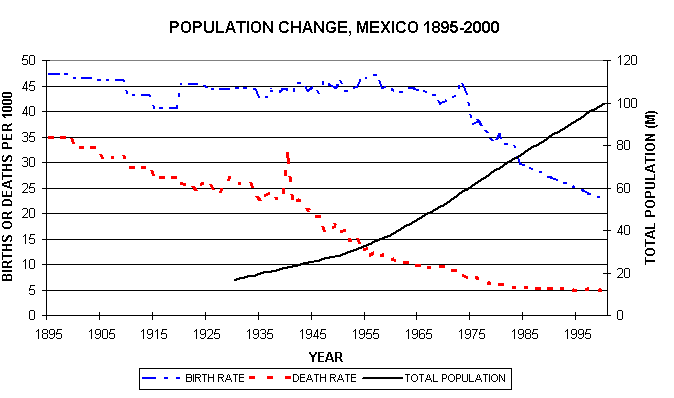top of page

Denographic transition modle-The Demographic Transition Model (DTM) is based on historical population trends of two demographic characteristics – birth rate and death rate – to suggest that a country’s total population growth rate cycles through stages as that country develops economically.
Demographic Transition Model

Mexico’s population exploded in the mid-20th century as death rates plummeted and birth rates remained high. From 1940 to 1980, the number of Mexicans more than quadrupled from under 20 million to over 80 million. In the 1960s and 1970s the population growth was among the world’s fastest at 3.3% a year. At this rate, the population doubles in less than 22 years.

2 ways of reducing child birth
---
---
Woman are getting more educated and are making better choices.
Woman are getting older and cant have babys anymore.
Maltus Arguement
His An Essay on the Principle of Population observed that sooner or later population will be checked by famine and disease, leading to what is known as a Malthusian catastrophe. He wrote in opposition to the popular view in 18th-century Europe that saw society as improving and in principle as perfectible.He thought that the dangers of population growth precluded progress towards a utopian society: "The power of population is indefinitely greater than the power in the earth to produce subsistence for man".As an Anglican cleric, Malthus saw this situation as divinely imposed to teach virtuous behavior. Malthus wrote: That the increase of population is necessarily limited by the means of subsistence, That population does invariably increase when the means of subsistence increase, and, That the superior power of population is repressed, and the actual population kept equal to the means of subsistence, by misery and vice.

bottom of page